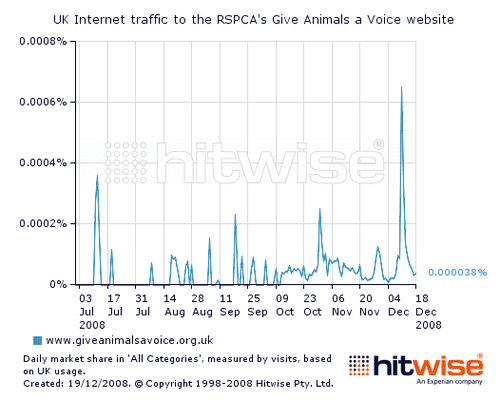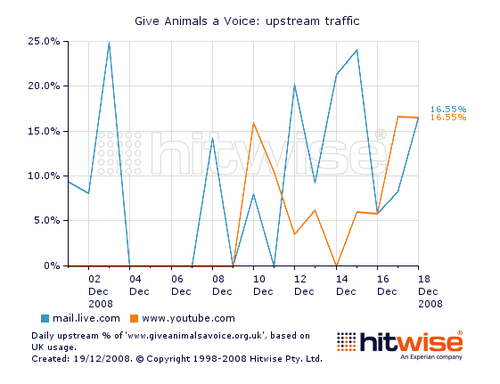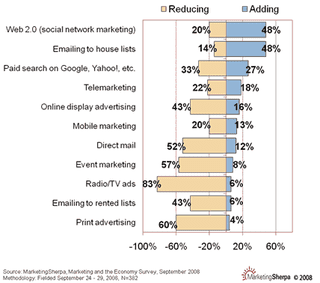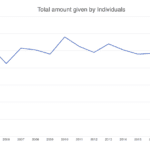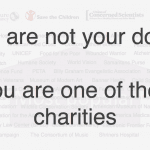Build it where they already are
There are some interesting statistics available from Robin Goad on Hitwise regarding a recent RSPCA viral campaign.
Simon's Cat creator Simon Tofield, released a new episode of his cartoon series on YouTube on December the 8th. But rather than being about Simon's cat, it was about his sister's dog and created for the RSPCA to highlight the problems of pet obesity.
As you might imagine, there was a direct link to the charity's Give Animals a Voicewebsite that helped generate a massive peak in visits over the next few days with up to 16.5% of traffic being generated by YouTube.
There's an interesting aspect worth pointing out in the importance of traffic generated from Hotmail (Microsoft Live Mail), which accounted for approximately 25% of traffic on two days. It's also fascinating to see, as Robin points out, that traffic went back the other way – for the week ending the 13th of December the top rated site after Give Animals a Voice was YouTube.
I've already Blogged about FORGE#39;s "buld it and hope they'll come" website strategy(which didn't work). The RSPCA have taken a different approach. They are being successful because they are tapping into a community that already exists. Simon's Cat's YouTube channelhas over 60,000 subscribers and some of the cartoons have had over 7.8 million views. This audience is going to contain a fair number of cat (and dog) lovers who could benefit from a reminder about pet health, but will probably also be good prospects for a gift too.
This approach of "build it where they already are" seems blindingly obvious. The days of put up a banner and hope they'll click are over. You might get picked up by the YouTube massive if, like Kiva you get a great partnership deal but now our goal must be to focus on going to our audience where they are in a way that works for them and adds real value to our brand.
MarketingSherpa has found that a large number of marketeers are already planning on taking this route. Their September 2008 survey of 382 marketing professionals found that 48% were planning on increasing their marketing budget for social networking sites compared to 43% who were planning on reducing their spend on online display advertising.
It's also interesting to note that a third of those surveyed were planning to reduce their spend on products like Google's Adwords and Yahoo's Search Marketing.
When it comes down to it, people are more likely to engage with us when they feel comfortable. If that means we need to go to their homes on the web, then that's where we should be. Just like we used to go to their real homes (and as we still do, for that matter) with the always reliable direct mail pack.


